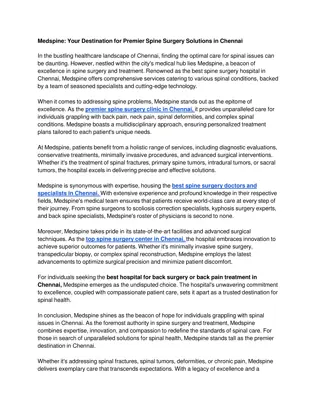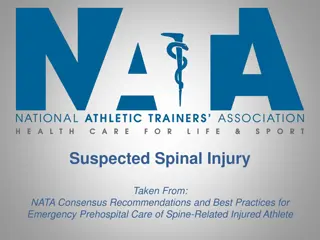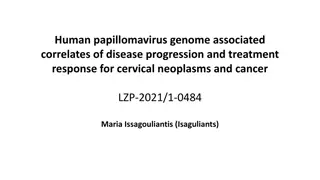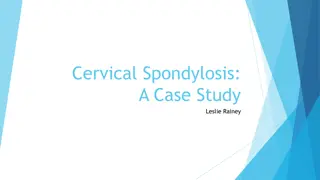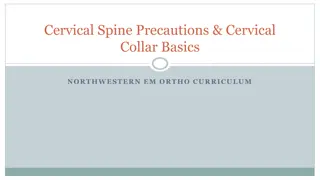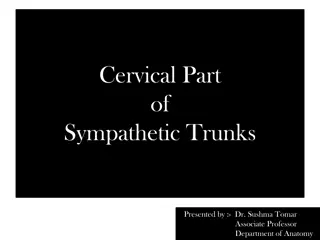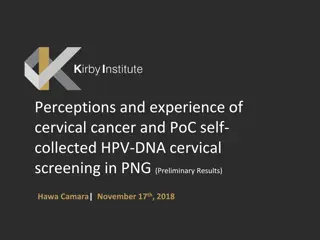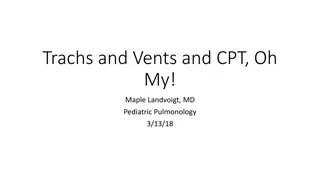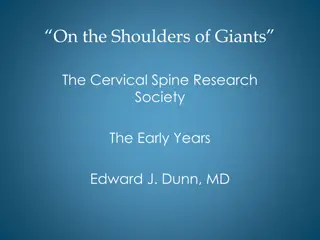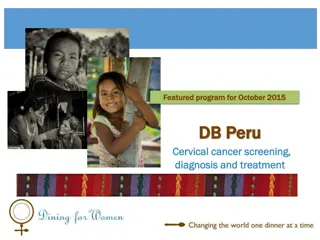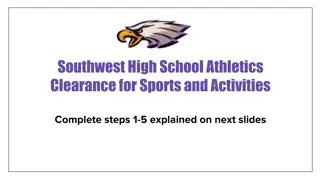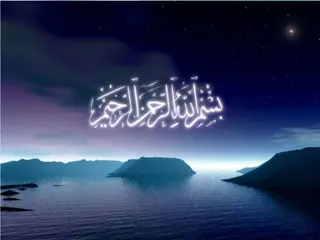Pediatric Cervical Spine Evaluation and Clearance - Comprehensive Review
This informative content delves into the significance, assessment, and clearance of pediatric cervical spine injuries, emphasizing the stratification by age groups and the importance of early evaluation. It highlights the need for spinal clearance in all trauma patients, discusses the immobilization challenges in children, and stresses the importance of timely clearance based on clinical feasibility. Various studies and criteria, such as the NEXUS low-risk criteria and the Viccellio et al. study, are referenced to provide a comprehensive understanding of managing pediatric cervical spine injuries.
Download Presentation

Please find below an Image/Link to download the presentation.
The content on the website is provided AS IS for your information and personal use only. It may not be sold, licensed, or shared on other websites without obtaining consent from the author.If you encounter any issues during the download, it is possible that the publisher has removed the file from their server.
You are allowed to download the files provided on this website for personal or commercial use, subject to the condition that they are used lawfully. All files are the property of their respective owners.
The content on the website is provided AS IS for your information and personal use only. It may not be sold, licensed, or shared on other websites without obtaining consent from the author.
E N D
Presentation Transcript
Clearing the Pediatric Cervical Spine Nilda M Garcia, MD, FACS Trauma Medical Director Dell Children s Hospital Associate Professor Pediatric Surgery UT Southwestern-Austin
Objectives Discuss the significance of the problem Review evidence for assessment of the pediatric cervical spine Discuss the approach to clearing the pediatric cervical spine Why, Who, When, How
Retrospective Review of NTDB Patients <3yo, 2001-2005 Any C-spine (cord and/or column) Injury- 1.59% Any spinal cord injury (with or without column injury)- 0.38% Isolated spinal cord injury- 0.19% Polk-Williams et al, JPS, 2008
Stratification of injury by Age of patient Infants Injuries to the upper cervical spine Mostly ligamentous In between (6-12 years) Variable position of injury Variable likelihood of boney vs. ligamentous injury Adolescents (13 years and over) Pattern of injury similar to adults
Who needs cervical spine clearance? All trauma patients need spinal clearance!
Immobilization Size matters Children are rarely calm in the ED Prolonged immobilization in the absence of injury is Not Good
When should the cervical spine be cleared? As soon as clinically feasible!
National Emergency X-Radiography Utilization Study (NEXUS) Low risk criteria included absence of: midline cervical tenderness, intoxication, altered MS, focal deficit, distracting injury Stratified by age: Pre-verbal ( 0-2) Immature spine (2-8) Older child (9-17) A Prospective Multicenter Study of Cervical Spine Injury in Children, Viccellio et al, Pediatrics, 2001
NEXUS Study 34,069 patients including 3,065 children 30 (0.98%) spinal injuries, 3.7% of all SCI 19.7% low risk Number of low risk patients with an injury was zero. 100% sensitive; 100% NPV; 1.2% PPV But- very few infants or toddlers so use caution applying NEXUS rules Viccellio et al, Pediatrics, 2001
Can simple clinical criteria be used to safely rule out CSI in <3 yo.- Multi-Center Study of the AAST Data from 22 Pediatric Trauma Centers 12,537 children (age< 3 yo) 83 cervical spine injuries (0.66%) Independent predictors of risk: GCS<14 Age>2 MVC GCS (eye)=1 If none present, no imaging necessary (69.7%) Masiakos, et al. , J Trauma, 2009
Weighted Score If weighted score 0 or 1, no imaging necessary (69.7%) If weighted score 2 or greater, clinical judgment Masiakos, et al. , J Trauma, 2009
Taking the collar off First exam is relatively normal X-rays normal REPEAT EXAM IS NORMAL Take the collar off
Patients with pain Screening x-rays Flexion/Extension views MRI shows ligamentous damage but not fractures well CT scans also useful Getting a head CT Plain films were not good enough High risk
Trauma Association of Canada Pediatric Subcommittee National Pediatric Cervical Spine Evaluation Pathway: Consensus Guidelines Review of the literature Create an evidence based, pediatric, c-spine clearance guideline Chung et al., J Trauma, 2011
YES Able clinically clear the C-spine C-Spine clear D/C collar Trauma Association of Canada National Pediatric C-Spine Evaluation Pathway: Reliable Clinical Exam NO Cooperative: AP/lat/odont x-rays Uncooperative: AP/lat x-rays Abnormal Leave collar on MRI Consider CT Spine svc consult Neurologic Exam Normal Abnormal Abnormal Normal and Adequate X-ray CT C-spine Normal Normal Leave collar on Spine svc consult Age >8 yrs Age 8 yrs NO Planning Head CT Normal Re-examine YES C-Spine clear D/C collar Leave collar on Spine svc consult Normal Abnormal CT Head and C1-3 Abnl Exam: C- sp tenderness Abnl Neurologic Exam Consider Flex/Ext x-rays Consider Spine svc consult Normal and adequate x-rays Leave collar on MRI Consider CT Spine svc consult Abnormal or inadequate x-rays May D/C with close follow up and consider removal of collar Leave collar on Consider MRI
Leave collar on MRI Consider CT Spine svc consult Trauma Association of Canada National Pediatric C-Spine Evaluation Pathway: Unreliable Clinical Exam Abnormal Neurologic Exam Normal AP/lat x-rays Consider CT C-spine Leave collar on Abnormal Leave collar on Spine svc consult Normal LOC NOT Frequent reassessment of LOC during first 24-72 hrs Leave collar on Spine svc consult improving Normal Patient alert and cooperative Consider MRI C-Spine LOC improving Follow reliable/conscious clinical exam pathway
Local biases Clear c-spine clinically (w/o any imaging) when appropriate May limit C spine imaging to lateral view if unstable Very strong bias to leave in collar and re- examine later Use MRI (within 72 hrs) if unable to clear
Summary Pattern of injury is variable by age Clinical clearance is practical and safe in most settings Radiographs should be used for defined purposes and judiciously






